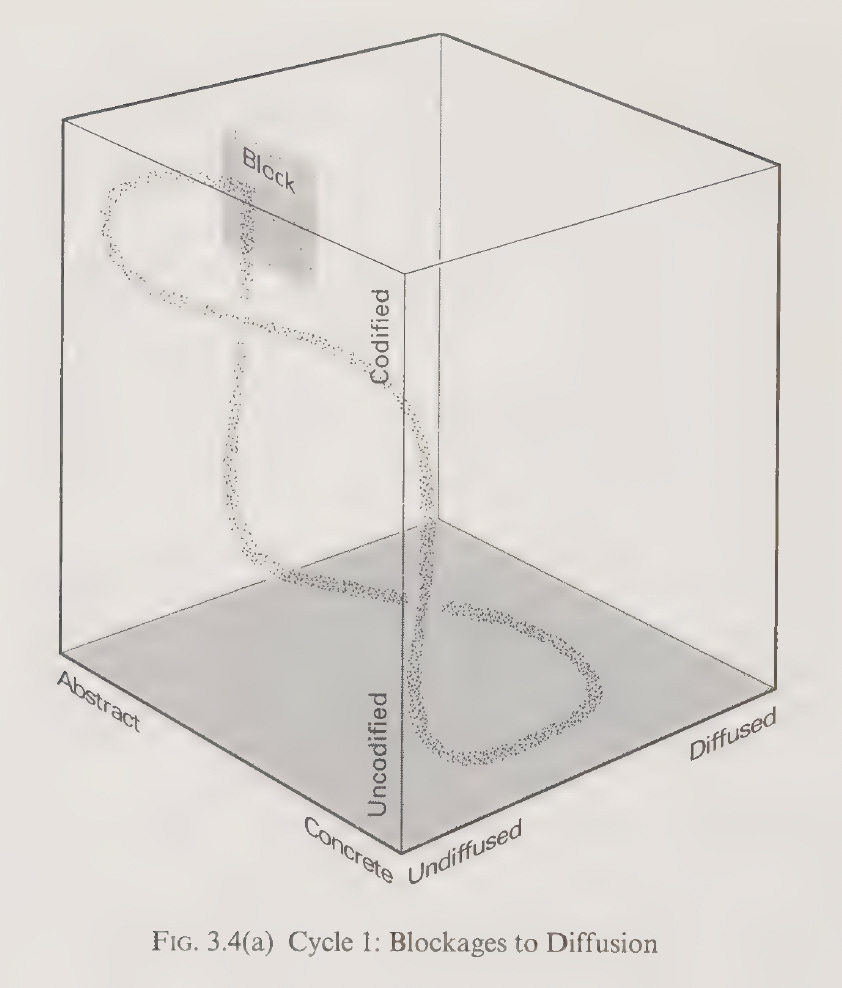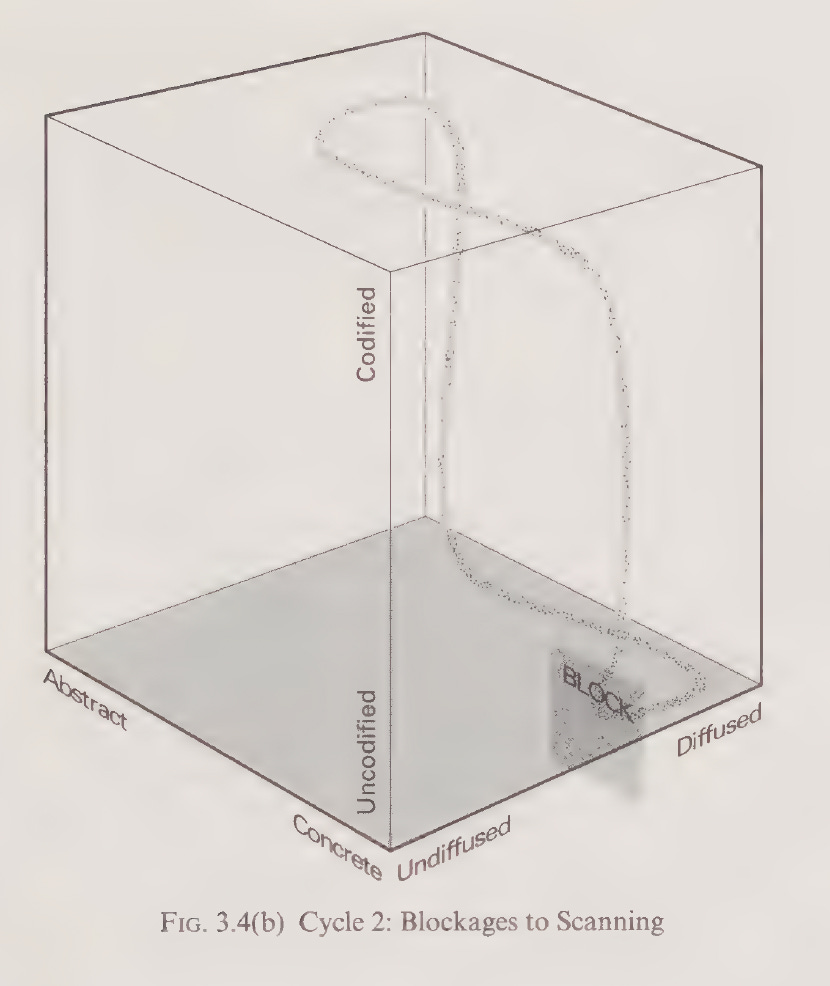Navigating Information Flow: A Deep Dive into Max Boisot's I-Space
If you've been following my blog, you know I'm fascinated by the world of knowledge, especially that tricky tacit kind. Remember our chat about making unspoken insights explicit ?
Well, get ready to dive deeper! Today, we're stepping into the "I-Space," a fascinating concept by polymath Max Boisot.
In the ever-evolving landscape of knowledge management, few frameworks are as insightful and transformative as the Information Space, or I-Space, conceptualized by the brilliant mind of Max Boisot.
Max Boisot, a distinguished professor and leading authority on knowledge management, has made significant contributions to our understanding of knowledge assets and their role in the information economy. His work draws from diverse fields, including economics, anthropology, and information science, offering a unique and holistic perspective on knowledge creation, sharing, and utilization.
The I-Space is not just an abstract concept; it's a practical tool that can illuminate the often-hidden dynamics of knowledge creation, sharing, and utilization. By understanding the I-Space, we can unlock the true potential of knowledge assets and gain a competitive edge in the information age (soon to be powered by Generative-AI).
Codification: Transforming Tacit into Explicit
At the heart of the I-Space lies the concept of codification. In essence, codification is the process of transforming tacit knowledge, the unspoken insights and intuitions residing in our minds, into explicit knowledge that can be documented, shared, and easily transferred.
Think of a go-to-market team at a publicly traded tech company. The team's collective understanding of customer pain points, competitive landscape, and effective messaging is often tacit. It exists in the minds of individual team members and in the unspoken interactions between sales and marketing. To leverage this knowledge, the team might create detailed buyer personas, document their sales playbook, or develop standardized marketing collateral. This is codification in action.
However, codification is not without its challenges. As knowledge is codified, it can lose some of its richness and context. The nuances and subtleties that make tacit knowledge so valuable can be lost in translation. It's like trying to capture the essence of a persuasive sales pitch in a PowerPoint presentation.
Abstraction: Unveiling the Underlying Principles
Abstraction takes codification a step further. It's about identifying the underlying principles and patterns that connect seemingly disparate pieces of knowledge.
In our go-to-market team example, abstraction might involve identifying the core value proposition that resonates with customers across different segments or the key messaging themes that drive successful marketing campaigns.
Abstraction is a powerful tool for knowledge management. It allows us to see the forest for the trees, to identify the fundamental principles that can be applied across different domains. However, excessive abstraction can lead to a loss of practical relevance. It's like having a grand theory of customer behavior but no clue how to close a deal.
Diffusion: The Spread of Knowledge
This one's simple: how far and wide does your knowledge spread?
Think of a viral marketing campaign versus a dry internal memo.
One spreads like wildfire, the other... not so much. Boisot says how we package knowledge (codified or abstract) affects how it travels. But here's the kicker: sometimes, the most valuable knowledge is the stuff that doesn't spread easily. It's like a star salesperson's secret closing technique – the fewer people who know, the better.
The I-Space: Where It All Comes Together
Boisot's I-Space brings these three dimensions together. It's a 3D space where knowledge exists as a point. The higher the codification and abstraction, the further it can spread (diffusion). This is the diffusion curve. But knowledge isn't static. It moves through the I-Space in a cycle:
Scanning: Spotting new market trends or competitor moves.
Problem-Solving: Crafting a targeted marketing campaign or sales strategy.
Abstraction: Identifying the core messaging that resonates with customers.
Diffusion: Rolling out the campaign or strategy across different channels and regions.
Absorption: Sales and marketing teams internalizing and adapting the new approach.
Impacting: The campaign or strategy driving measurable results, like increased leads or closed deals.
When Knowledge Gets Stuck: The Blockages
Sometimes, this cycle hits a snag. Boisot calls these blockages:
Cycle 1: Blockage to Diffusion: The knowledge is too specialized or complex to be easily shared. For example, a complex sales process for a highly technical product might not be easily transferable to other product lines.
Cycle 2: Blockage to Scanning: A culture of competition between sales and marketing prevents the teams from sharing insights and collaborating effectively.
Cycle 3: Blockage to Absorption: The knowledge is available, but sales reps are too busy chasing quotas to invest time in learning new techniques or understanding the latest marketing materials.
Entropy: The Chaos FactorBoisot introduces the concept of entropy to the I-Space. Entropy, in this context, refers to the level of disorder or chaos in the knowledge system.
High entropy means knowledge is fragmented, disorganized, and difficult to use.
Low entropy means knowledge is well-structured, accessible, and easy to apply.
The I-Space can be divided into zones of high and low entropy. The most fertile ground for knowledge creation and innovation lies at the "edge of chaos," where there's a balance between order and disorder. A go-to-market team operating in a high-entropy environment might struggle to align their messaging or coordinate their efforts, leading to missed opportunities and lost deals.
The I-Space in Action
Let's revisit our go-to-market team example. Imagine a scenario where the team has successfully codified and abstracted their knowledge, creating a well-structured repository of best practices and messaging frameworks. This knowledge is then diffused throughout the organization, enabling other teams to learn and apply it. However, as the knowledge spreads, it encounters different interpretations and contexts. The sales team might focus on the practical aspects of closing deals, while the marketing team might prioritize brand awareness and lead generation. This is where the absorption and impacting phases of the SLC come into play. As teams absorb and apply the knowledge, they generate new insights and feedback, which then feed back into the scanning and problem-solving phases. This creates a continuous cycle of learning and innovation, driving the organization forward.
Unleashing the Power of the I-Space
The I-Space is not just a theoretical model; it's a powerful tool for understanding and managing knowledge flow in the digital age. By recognizing the different dimensions of knowledge and the dynamics of the SLC, we can identify and overcome blockages, reduce entropy, and create a thriving ecosystem of knowledge creation and innovation.
So, take a moment to reflect on the I-Space and its implications for your own work and organization. Where do you see opportunities for codification, abstraction, and diffusion? What blockages are hindering the flow of knowledge? How can you create a culture that embraces learning and innovation? Are you contributing to the entropy of your team or organization? Are you part of the solution or part of the problem?
The I-Space is a journey of discovery, a way to navigate the complexities of knowledge and unlock its true potential. So, let your imagination run wild and explore the endless possibilities that await you in the Information Space.
Conclusion and thoughts
Boisot's I-Space reveals a fascinating paradox: the very human elements that drive knowledge creation can also hinder its flow. Fear of job security, internal competition, and simple busyness can create blockages in the system. But what if we could introduce a player who's immune to these human foibles? Enter generative AI. Imagine an AI "colleague" who tirelessly scans for new ideas, effortlessly processes vast amounts of data, and fearlessly challenges the status quo. This isn't about replacing humans, but augmenting our abilities. By partnering with AI, we can break down those pesky blockages and unleash the full potential of collective knowledge. It's like having a tireless assistant who's always got your back, ensuring that no brilliant idea gets lost in the shuffle.
References: Explorations in Information Space: Knowledge, Agents, and Organization









